Accept all cookies Accept only essential cookies See our Cookie Notice

About ESA
The European Space Agency (ESA) is Europe’s gateway to space. Its mission is to shape the development of Europe’s space capability and ensure that investment in space continues to deliver benefits to the citizens of Europe and the world.
Highlights
ESA - United space in Europe
This is ESA ESA facts Member States & Cooperating States Funding Director General Top management For Member State Delegations European vision European Space Policy ESA & EU Space Councils Responsibility & Sustainability Annual Report Calendar of meetings Corporate newsEstablishments & sites
ESA Headquarters ESA ESTEC ESA ESOC ESA ESRIN ESA EAC ESA ESAC Europe's Spaceport ESA ESEC ESA ECSAT Brussels Office Washington OfficeWorking with ESA
Business with ESA ESA Commercialisation Gateway Law at ESA Careers Cyber resilience at ESA IT at ESA Newsroom Partnerships Merchandising Licence Education Open Space Innovation Platform Integrity and Reporting Administrative Tribunal Health and SafetyMore about ESA
History ESA Historical Archives Exhibitions Publications Art & Culture ESA Merchandise Kids Diversity ESA Brand Centre ESA ChampionsLatest
Space in Member States
Find out more about space activities in our 23 Member States, and understand how ESA works together with their national agencies, institutions and organisations.
Science & Exploration
Exploring our Solar System and unlocking the secrets of the Universe
Go to topicAstronauts
Missions
Juice Euclid Webb Solar Orbiter BepiColombo Gaia ExoMars Cheops Exoplanet missions More missionsActivities
International Space Station Orion service module Gateway Concordia Caves & Pangaea BenefitsLatest
Space Safety
Protecting life and infrastructure on Earth and in orbit
Go to topicAsteroids
Asteroids and Planetary Defence Asteroid danger explained Flyeye telescope: asteroid detection Hera mission: asteroid deflection Near-Earth Object Coordination CentreSpace junk
About space debris Space debris by the numbers Space Environment Report In space refuelling, refurbishing and removingSafety from space
Clean Space ecodesign Zero Debris Technologies Space for Earth Supporting Sustainable DevelopmentLatest
Applications
Using space to benefit citizens and meet future challenges on Earth
Go to topicObserving the Earth
Observing the Earth Future EO Copernicus Meteorology Space for our climate Satellite missionsCommercialisation
ESA Commercialisation Gateway Open Space Innovation Platform Business Incubation ESA Space SolutionsLatest
Enabling & Support
Making space accessible and developing the technologies for the future
Go to topicBuilding missions
Space Engineering and Technology Test centre Laboratories Concurrent Design Facility Preparing for the future Shaping the Future Discovery and Preparation Advanced Concepts TeamSpace transportation
Space Transportation Ariane Vega Space Rider Future space transportation Boost! Europe's Spaceport Launches from Europe's Spaceport from 2012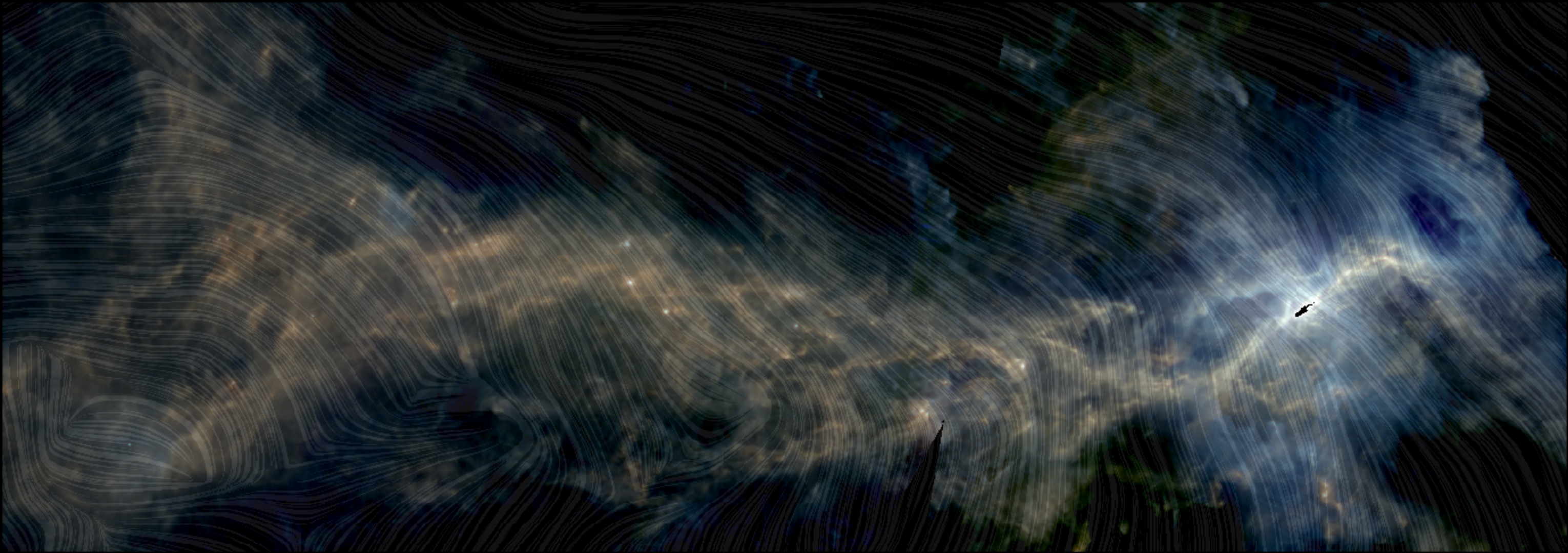
Orion A in infrared
Thank you for liking
You have already liked this page, you can only like it once!
Stars form within giant clouds of gas and dust that pervade galaxies like our own Milky Way. This image depicts one such cloud, known as Orion A, as seen by ESA’s Herschel and Planck space observatories.
At 1350 light years away, Orion A is the nearest heavyweight stellar nursery to us. The cloud is packed full of gas – it contains so much material, in fact, that it would be capable of producing tens of thousands of Suns. Along with its sibling, Orion B, the cloud makes up the Orion Molecular Cloud Complex, a vast star-forming region within the constella-tion of Orion, which is most prominent in the night sky during northern hemisphere winter and southern hemisphere summer.
The different colours visible here indicate the light emitted by interstellar dust grains mixed within the gas, as observed by Herschel at far-infrared and sub-millimetre wavelengths, while the texture of faint grey bands stretching across the frame, based on Planck’s measurements of the direction of the polarised light emitted by the dust, show the orientation of the magnetic field.
As evident from images like this, the space that sits between stars is not empty but is instead filled with a cool substance known as the interstellar medium (ISM) – a mix of gas and dust that often clumps together. When these clumps become dense enough they start to collapse under their own gravity and become hotter and hotter and denser and denser until they spark something exciting: the creation of new stars.
Magnetism is an important component of the ISM. Magnetic fields permeate the Universe, and are involved in helping clouds of matter maintain the delicate balance between pressure and gravity that eventually lead to the birth of stars. The mechanisms that oppose the gravitational collapse of star-forming clouds remain somewhat unclear, but a recent study suggests that interstellar magnetic fields play a significant role in guiding the flows of matter in the ISM, and may be a key player in preventing inter-stellar cloud collapse.
The study finds that matter within the ISM is coupled to the surrounding magnetic field and can only move along its lines, creating a sort of ‘conveyor belts’ of field-aligned matter, as expected from the effect of electromagnetic forces. When these interact with an external source of energy – such as an exploding star, or other material moving through the galaxy – these flows along the magnetic field lines converge. The process creates a compressed pocket of higher density that appears to be perpendicular to the field itself. As more and more matter streams inwards, this region becomes increasingly dense, until it eventually reaches the critical density for gravitational collapse and crumples in on itself, leading to the formation of stars.
The data comprising this image were gathered during Planck’s all-sky observations and Herschel’s ‘Gould Belt Survey’. Operational until 2013, both Herschel and Planck were instrumental in exploring the cool and the distant Universe, shedding light on many cosmic phenomena, from the formation of stars in our Milky Way galaxy to the expansion history of the entire Universe.
The study was published in Astronomy & Astrophysics (2019) by J. D. Soler, Max Planck Institute for Astronomy (Heidelberg, Germany).
-
CREDIT
ESA/Herschel/Planck; J. D. Soler, MPIA -
LICENCE
ESA Standard Licence
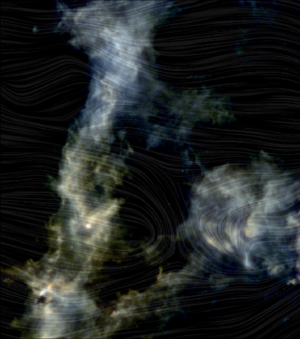
Lupus cloud complex viewed by Herschel and Planck
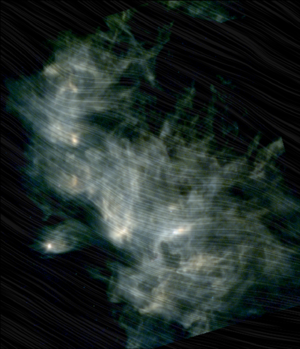
Chamaeleon II molecular cloud viewed by Herschel and Planck
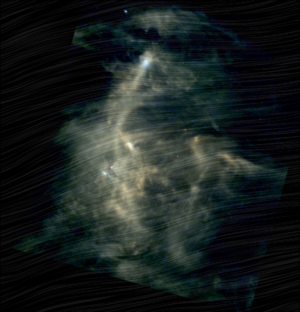
Chamaeleon I molecular cloud viewed by Herschel and Planck
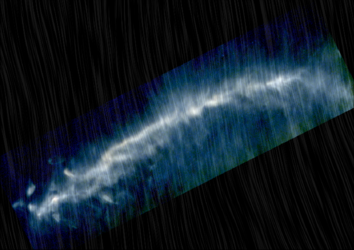
The Musca molecular clouds viewed by Herschel and Planck
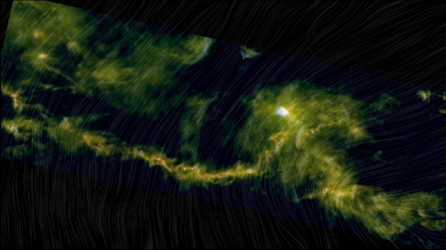














 Germany
Germany
 Austria
Austria
 Belgium
Belgium
 Denmark
Denmark
 Spain
Spain
 Estonia
Estonia
 Finland
Finland
 France
France
 Greece
Greece
 Hungary
Hungary
 Ireland
Ireland
 Italy
Italy
 Luxembourg
Luxembourg
 Norway
Norway
 The Netherlands
The Netherlands
 Poland
Poland
 Portugal
Portugal
 Czechia
Czechia
 Romania
Romania
 United Kingdom
United Kingdom
 Slovenia
Slovenia
 Sweden
Sweden
 Switzerland
Switzerland
























